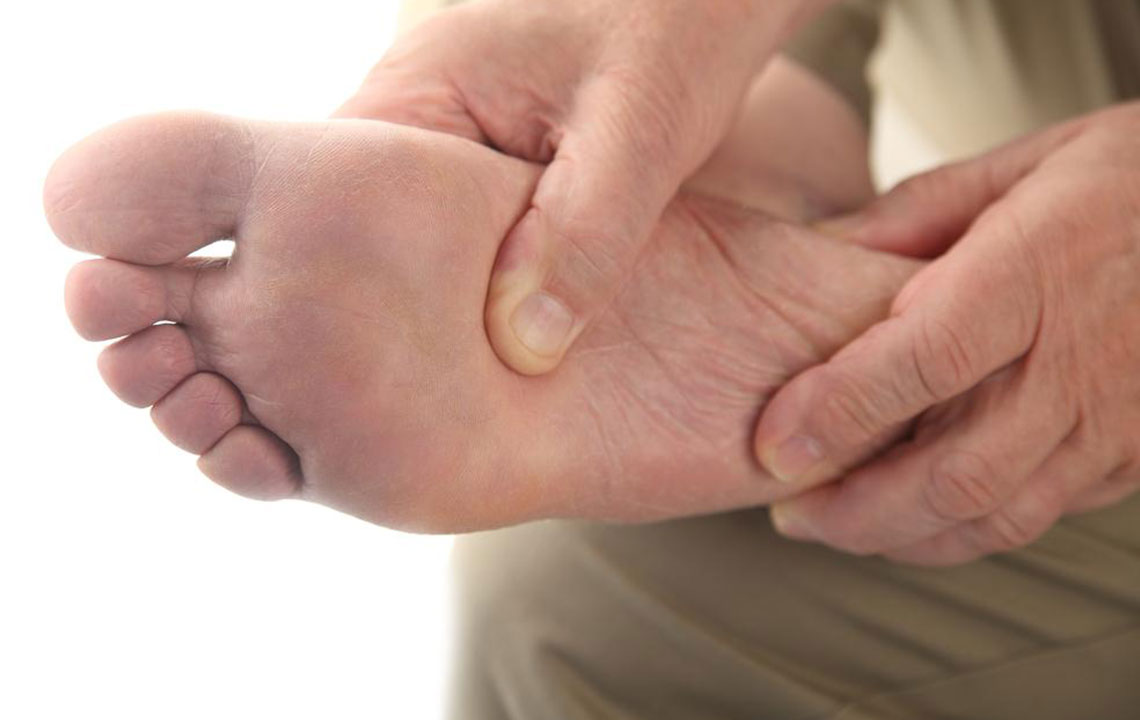How Can You Know If You Are Suffering from Gout Foot Pain

Gout is a kind of arthritis which can cause a sudden attack of pain. The common symptoms of having gout can be realized from stiffness, burning pain, and swelling in the joint. If not treated at an early stage, gout can damage the joints and harm the tendons and other tissues. Gout foot pain is very common in men; it is caused by an excess of uric acid in the blood. The uric acid may harden and form crystals in the joint.
Risk factors
People who are obese may be susceptible to gout foot pain. Also consuming alcohol, meat, and fish can affect the body. Some medicines like water pills can also cause gout foot pain. The most common syndrome is night-time pain in the joint. Some people also get pain attacks on their knees, ankle, joints, foot, etc. and these can go on for an entire day or a week before one gets relief. Sometimes it the pain may persist for over a year also. Even if the pain is gone, it is advisable to see a doctor because sometimes even after the pain is gone the buildup of uric acid may still occur and can attack the joints.
Gout foot pain is common in men. With age, the pain can become more unbearable, and the chances of getting gout attacks become high. So a proper maintenance of lifestyle is essential. With age, a person has less resistant power, less stamina to do physical work, and low patience. So a proper diet is important. A diet chart should be prescribed by a doctor or a nutritionist; without proper examination, a doctor or a nutritionist normally does not prescribe any medicine. So taking advice from the expert is advisable. Sometime the doctor may prescribe some easy exercises according to the capability of the patient. This can be very beneficial. The patient should provide all the details about the pain and attack so that it can help the doctor to have a proper diagnosis.
An early start of treatment can give quick relief from the pain. Sometimes people ignore the pain and wait till it becomes unbearable. In that case, if the treatment gets delayed, the cure may take more time to be effective. In many cases, a delayed treatment makes no difference, leaving the patient in an unbearable state for the rest of his life. Or he may have to replace his joint which might be much more expensive and stressful. Early treatment will not cause so much difficulty, and with smaller doses of medicines or some easy exercise, the pain can be taken care of.
As opposed to popular perception, it is not just seniors who suffer gout foot pain; many young people can also suffer from unbearable gout foot pain. So a regular checkup is essential if a person experiences persistent pain. There are a number of medicines available in the market, and with proper treatment, this unbearable pain can be fought without any difficulty.
Treatment
With a proper checkup and physical examinations that collect fluid samples from the joints to check for the presence of uric acid crystals, a doctor can do a correct diagnosis of gout foot pain. Another way to check for gout is by testing blood samples and measuring the amount of uric acid in the blood. After this, a doctor will prescribe the required treatments. Normally, a doctor prescribes a shot of corticosteroids or doses of other medicines. Treatments vary according to the symptoms. A right treatment can cure a gout attack within 24 hours. Having a proper diet as prescribed by a doctor can ease the pain to a large extent. If the treatment can be started at an early stage, gout can be cured in a lesser time.
There are very few things which can be more painful than gout. So an early treatment is very crucial. Taking aspirin can worsen the situation. Applying ice to the pain can give some relief. Applying an ice bag over the affected area for 20 to 30 minutes can be effective. Drinking plenty of water is also necessary; there are many types of equipment available in many orthopedic shops which can give the necessary support and prevent gout attacks. Some of the easy tips to follow to prevent gout attacks are to apply ice and take proper rest; even the weight of clothes can be unbearable in case of a gout attack. Wear light-weight clothes. Having proper diet is crucial. Drink enough water and stay hydrated and take advice from a doctor for proper steroids. It is necessary to be patient and not panic.


